As a longtime reptile enthusiast, I’ve often observed my Leopard geckos displaying a peculiar behaviour: attempting to scale the glass sides of their aquarium or tank. This can be both intriguing and concerning for any pet owner.
Leopard geckos, though small and generally easy to care for, sometimes exhibit such actions for various reasons. These tiny lizards are naturally active and curious creatures. Their instinct to explore can be misinterpreted as trying to escape. They are also excellent climbers, and it’s not uncommon to see them trying to ascend the vertical surfaces of their enclosure. It’s essential to ensure that their habitat is both secure and stimulating.
Providing a spacious tank with adequate climbing opportunities and hiding spots can often mitigate this behaviour. It’s fun to watch them navigate their little world, but when you notice such actions, it’s crucial to ask yourself if their environment meets all their needs.
Sometimes, the solution can be as tricky as adjusting the temperature or adding more engaging features to their enclosure. Remember, understanding and catering to your pet’s natural behaviours is key to ensuring their well-being and happiness.
Table of Contents
Why is my leopard gecko trying to escape?
In my journey with Leopard geckos, I’ve often pondered, “Why is my leopard gecko trying to get away?” These climbing aficionados are known for their attempts to scale to the top of their enclosure.
This behaviour might seem like they’re trying to escape, but it’s often a sign of them being either bored or hungry. Sometimes, they are simply trying to explore or get closer to a heat source, especially in inadequately heated enclosures. Additionally, if there are other animals in the vicinity, your gecko might feel threatened and look for ways to avoid them.
It’s crucial to understand that frequent attempts to flee can also be a response to unwanted handling, as these creatures value their peace. Ensuring a stimulating environment with adequate food, heat, and safety can often curb their need to escape. Boldly put, these actions are their way of communicating their needs or discomforts to us, the pet owners.
As an avid keeper of small lizards, I’ve come to realize that these common pets are not the easiest to care for. When your gecko keeps climbing to the top of its enclosure, it’s a clear signal that something is wrong. Keep reading to find out why your scaly friend is making escape attempts.
This behaviour is often misconstrued as a mere curiosity, but it’s a distress signal. It could be a cry for a more enriching environment, a need for better temperature regulation, or even a sign of health issues. Understanding the unique needs of these fascinating creatures is crucial for their well-being, and noticing such cues is part of the journey of pet ownership. Addressing their concerns not only prevents escape attempts but also fosters a healthier, happier gecko.
Is Your Gecko Really Trying To Escape?
When your gecko climbs to the top of its tank, it’s easy to think it’s trying to escape. But in the world of wall climbing and escape attempts, there’s more than meets the eye. Leopard geckos, being terrestrial lizard species accustomed to navigating low rocky terrains, often enjoy small rocks but aren’t necessarily good at climbing over the ground. So, when they start climbing up the tank walls, it’s not a great sign. This behaviour, often termed glass surfing, doesn’t necessarily mean they’re trying to get out of their enclosure.
There are various reasons for this behaviour. It could be a response to seeing animals or movements outside their tank, looking for a way out. Or, it could be that they’re trying to go into a different part of their home to make it more comfortable. As a pet owner, seeing your Leo try this might indicate some other reason for their unrest. It’s important to observe and address these behaviours to ensure the well-being of these fascinating reptiles.
1. First Thing’s First
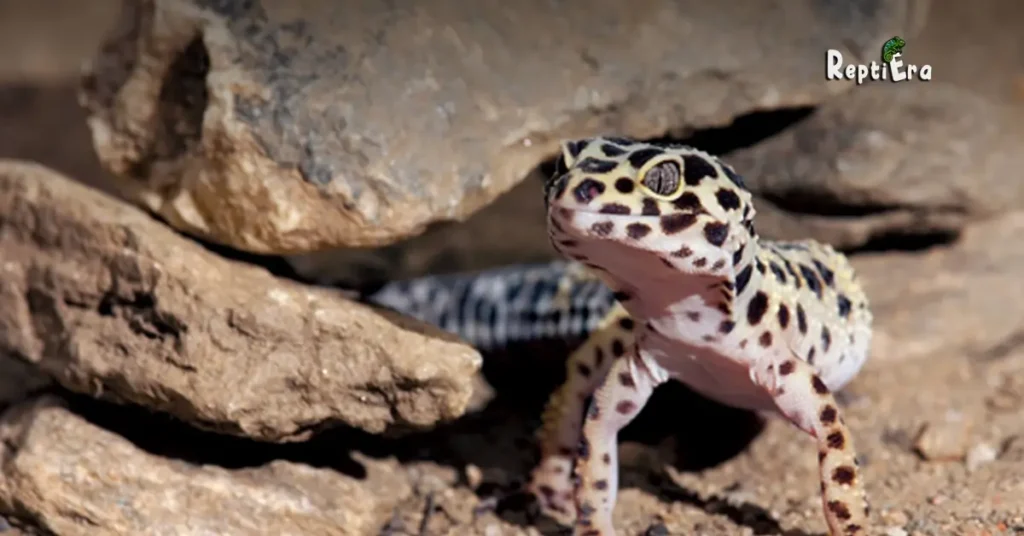
Before addressing serious potential causes for this behaviour, it’s crucial to consider the unusual situation your leopard gecko faces when brought home to a new habitat. Initially unaccustomed to this foreign environment, the creature may feel stressed out, with an instinct to escape until it feels comfortable.
Remember, these geckos are adapted to living in the wild, where they have ample space to roam around. If the tank feels cramped and doesn’t allow them to comfortably live, the space might be the issue. However, if space isn’t an issue, don’t worry. It’s not always about having a big enclosure, but ensuring your gecko is comfortable and able to naturally walk around in their bigger area.
(When considering 20-gallon tanks for leopard geckos of various sizes, it’s essential to think beyond the standard. While this size may suffice, larger tanks offer more space for your gecko to walk around, closely mimicking their wild habitat. This extra room can significantly minimize the chances of your leopard gecko trying to escape. In the wild, they have vast spaces at their disposal, so providing a large tank can make a notable difference.
Though a 20-gallon tank is generally acceptable for single leopard geckos, observing them trying to climb the glass and escape on occasion might indicate a need for more room. If you’re watching these attempts frequently, I would recommend opting for a larger tank than the 20 gallons to ensure they have ample space to explore and feel content.)
2. They’re Exploring
When you’ve got a gecko, expect it to be exploring, just like any other animal. This reptile behaviour, especially in a new place, is akin to how dogs run the perimeter of a yard or check out every room in a house. It’s their way of doing a general sweep of the new enclosure. It’s natural for them to want to explore. With their decent eyesight and tongues, they used to lick and sense the environment, there are several reasons why you might notice them licking their tankmates or themselves.
They’re curious creatures, and even the roof of their home is not too crazy a place to think to climb. When they climb everywhere they possibly can, it’s not just a good lick they’re after; it’s their need to explore. While this might technically look like an escape attempt, it’s definitely more about their desire to make sense of their surroundings. So, don’t be alarmed when your gecko tries to explore every inch of its world; it’s simply their nature.
Related Post: DO LEOPARD GECKOS CLIMB
3. They’re Hungry
When neglecting a gecko’s diet, they might start taking matters into their own hands. In the wild, a hungry gecko won’t just sit idle; they’ll branch out further from their home base to find something that resembles food. This behaviour is also seen in reptiles in captivity. We know that leopard geckos can store fat in their tails, and a larger, plumper tail indicates they’re getting enough food.
Conversely, a thin tail might be a sign your pet is actually hungry. If they start trying to escape to find food, it’s a worry, but not always your fault. A gecko is a great eater, and these lizards are efficient hunters. Sometimes, they might miss food that’s right under their noses. Understanding and addressing their dietary needs can prevent these desperate escape attempts, ensuring your gecko remains healthy and content within its enclosure.
Related Post: CAN LEOPARD GECKOS EAT VEGGIES
4. They’re Bored
Pet reptiles, like leopard geckos, need stimulation and enrichment to thrive in captivity. Unlike the wild, where a gecko’s day is never ended with a splay of habitats and experiences to keep them mentally stimulated, the environment in captivity can sometimes be too boring. Pets, without enough interesting elements in their environment, might become bored and acquire destructive habits.
Their attempts to explore and escape their enclosures can often be a sign of them seeking a more stimulating environment. They feel the need to find something more exciting when they don’t have enough space to wander up and out. Providing a varied and engaging habitat for your gecko is essential to prevent these escape attempts and ensure their well-being and happiness.
If you’re not sure how to spice things up for your pet reptile, check out the video below for a few ideas.
Hopefully, something as simple as switching around the things in their enclosure will keep your gecko from making escape attempts.
5. They’re Too Hot Or Too Cold
Leopard geckos prefer Hot environments.
Many reptiles, including geckos, require a specific temperature range to thrive. For a gecko’s enclosure, temperatures between 77F and 90F are ideal. If the heat source, like a heat lamp or heating pad beneath the tank, makes the enclosure too hot, your gecko might escape to a cooler surface. An overheated gecko becomes uncomfortable and may start climbing closer to the cold areas to cool down.
Conversely, if they get too cold, their metabolism might shut down, leading to them not eating, moving less, and behaving unusually until they are properly warmed up. Their bodies can only function properly without temperature imbalances. Using a thermometer in the area where your scaly friend resides is crucial. Implementing multiple thermometers throughout the enclosure ensures a consistent and comfortable environment, reducing their urge to escape due to temperature discomfort.
6. They’re Trying To Escape From Tankmates
Do you have more than one leopard gecko?
An escape attempt can be a sign of conflict among your pets. If your gecko is trying to get out, it might not be getting along with a tankmate. This is particularly true if one is less dominant and feels the need to climb to the roof of the enclosure to get away.
Territorial and aggressive behaviours are common in geckos, as they are naturally solitary creatures. While some may live well together, especially if they were hatched and raised alongside each other and got along fine for their entire lives, issues usually arise when introducing new geckos or in case of violent, territorial disputes. It’s crucial to observe your pets for signs of biting, bullying, or wounds, and be prepared to separate them if necessary for their well-being and safety.
Recognizing these social dynamics is key to preventing escape attempts and ensuring a peaceful cohabitation for your leopard geckos.
7. They Don’t Want To Be Handled
A fear of handling can lead to an escape response in your gecko. When they come around to see your hand and then suddenly dart to the top of the enclosure, they are trying to escape from you. This theory contrasts with the belief that leopard geckos are one of the more handleable reptiles. In reality, each lizard has a unique personality, and some can be quite flighty.
When starting to handle a new pet, it’s crucial to take it slowly and not force the interaction, as it can be stressful for them. Making handling sessions enjoyable and rewarding with their favourite treat can help. If your gecko runs away at the sight of you, there’s still work to do in building trust and comfort. Respecting their boundaries and gradually acclimating them to handling can transform this fear into a positive and rewarding experience for both you and your gecko.
8. Not Enough Hiding Places
Leopard geckos need to feel safe and protected; when they don’t, it’s no guess why they might try to escape their tank. A key reason could be the absence of places to hide, making them feel vulnerable to perceived attacks from predators.
In both captivity and the wild, these geckos instinctively hide to protect themselves, whether it’s burrowing in the ground or finding refuge under shaded rocks where larger predators can’t reach. Therefore, in captivity, it’s crucial to provide adequate hiding places. Without these, your gecko may feel exposed and stressed, leading to escape attempts as they seek out safer, more secure environments.
(For your leopard gecko, having 3 hides is essential: one on the cold side of the tank, another on the hot side, and a moist hide for when they shed. Without these hiding places, they can start feeling overly exposed, leading to stress. This stress can weaken their immune system, making them sick.) AMZ LINKS 3 Hides
To avoid the need to get 3 hides ASAP for your leopard gecko, keep in mind when choosing a hide the size that best suits your leopard gecko. Smaller hides are ideal for babies, medium-sized for juveniles, and large for adults. These hides are mandatory pieces of equipment, and without them, your gecko may be constantly trying to escape, in a constant state of distress, unable to find a suitable place.
9. Tank Is Too Small
As stated above, leopard geckos are used to having plenty of space to move around. When confined in an enclosure that’s too small, they may attempt to get out in search of more room. As they reach adulthood fairly quickly, if you’ve started with a 10-gallon tank, you’ll need to upgrade to at least 20 gallons as they age. Even at 2 months old, they begin to need more space.
Whether kept as a juvenile or an adult, a small tank will make them feel cramped up and stressed, leading to unhappy situations where it’s normal for them to want to escape. Their living spaces should be natural and align with what they are used to.
In growing leopard geckos, it goes against their nature to be confined. They grow fast, and if you don’t see the point in purchasing a tank only to turn around and replace it two months later, it’s possible to get a tank that’s perfect for a fully-grown gecko from the start.
This applies to both babies and juveniles and will ensure you never run into the problem of them trying to escape once they reach a certain age. I recommend getting a larger tank right away to save the stress and worry in the near future.
10. Signs of Stress and Illness
There are several reasons why a leopard gecko might try to escape its enclosure, with stress and illness being prominent. Common signs of these issues include hiding more than usual, a lack of appetite, and noticeable changes in behaviour. When feeling stressed, if they’re not in a comfortable and secure environment, it can cause lethargy and loss of appetite. If you suspect your gecko is sick, it’s important to take them to a veterinarian as soon as possible. Additionally, make sure their habitat is secure and suitable; an enclosure that’s too small, has poor ventilation, or is not clean, may lead to these stress-related behaviours.
11. They’re gravid (pregnant) and looking for a place to lay their eggs.
If you notice a behaviour change, it’s likely your leopard gecko is gravid (pregnant) and in need of a place to lay her eggs. In the wild, these reptiles typically lay eggs in burrows or sheltered areas. In captivity, if they don’t have access to a suitable nesting site, they might find themselves climbing, strangely attracted to smooth surfaces like glass, which might resemble the ideal surface for an egg-laying site.
When trying to climb the enclosure, they are essentially seeking a secure spot to lay their eggs. As a responsible owner, it’s crucial to provide a nesting box or shelter to help your gravid gecko feel comfortable and prevent her from injuring herself during this vulnerable time.
Is the leopard gecko feeling threatened or stressed by its surroundings?
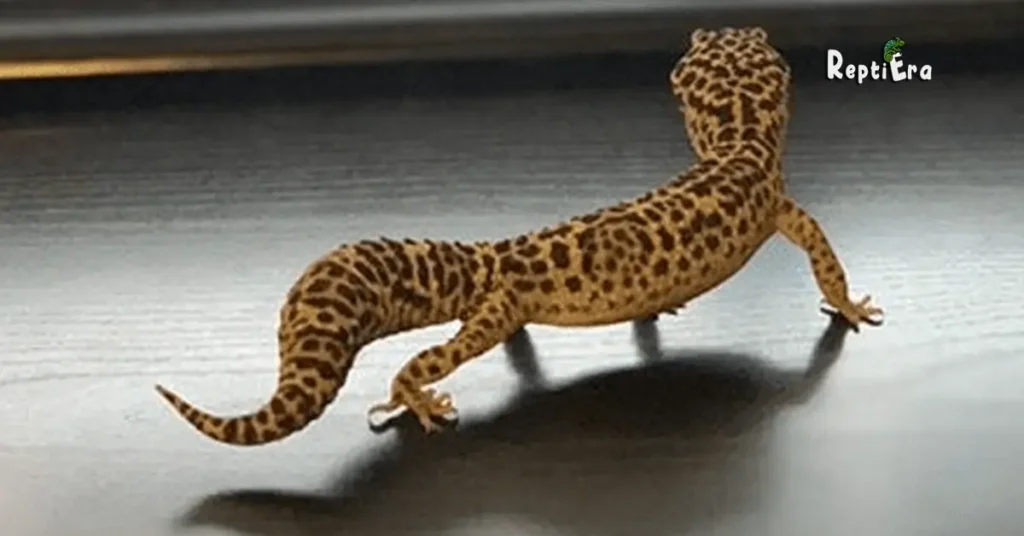
It’s important to consider whether your leopard gecko is feeling threatened or stressed by its surroundings while attempting to escape. Their instincts to flee from danger can be triggered if they perceive the environment as unsafe or hostile. This behaviour can be caused by factors such as the presence of other pets perceived as predators, loud noises, or sudden movements near their enclosure.
To ensure your gecko is comfortable and stress-free, it’s crucial to provide a secure and peaceful environment. Regularly monitoring their behaviour for signs of discomfort and addressing and alleviating these sources of threat can significantly reduce the likelihood of escape attempts.
Can You Prevent Your Leopard Gecko From Escaping?
There are great ways to prevent your leopard gecko from escaping its enclosure. To prevent escapes, set up the habitat correctly with the right temperature and humidity, creating an environment they want to stay in. A good setup includes a latching mechanism that is secured tightly. Ensure they have ample food and water, so they don’t feel the need to go looking elsewhere.
Be extra careful when handling them; reach in gently and grab your pet in a way that doesn’t startle them. Always hold them securely and don’t let go until you’re ready to put them back. It’s a good idea when handling them to do so in a smaller room with less furniture for them to get away; this makes them easy to find if they do attempt an escape.
Preventing Escapes
Preventing your leopard gecko from trying to escape involves first understanding the reasons behind this behaviour. By providing a secure and comfortable environment, monitoring stress levels, and ensuring they are healthy, you can effectively prevent escapes and keep them happy. It’s important to have an enclosure with a lid that fits properly and is made of durable material, whether it’s mesh or glass, to help make sure that all cracks and gaps are sealed, preventing them from finding a way out.
Related Post: ARE LEOPARD GECKOS GOOD PETS?
What Do I Do If My Leopard Gecko Escapes?
There could come a regrettable moment when you realize your Gecko has mysteriously disappeared. This isn’t a common occurrence and certainly raises alarm. Nevertheless, if you discover your Gecko has vanished, there are specific measures you can take:
- Remain calm
- Inspect all hiding places
- Search the floor of your home
- Look in warm areas
- Thoroughly clear the floor space
- Examine inside your shoes
FAQs
How do I know if my leopard gecko is stressed?
Stress manifests differently in each gecko, yet some typical indicators include:
- Frequently remaining in their hides.
- Engaging in glass surfing.
- Reduced food intake and/or experiencing weight loss.
- Exhibiting behaviours such as tail wagging, vocalizing, rapid breathing, and extreme skittishness, are all indicative of stress.
Why does my leopard gecko try to get out of his tank?
Glass surfing or glass dancing is a sign that your gecko is distressed and wants to escape an uncomfortable situation. Factors like Cohabitation stress, mites, and a tank that’s too hot, too small, or too dull can trigger this behaviour.
Why is my leopard gecko trying to climb the walls?
My geckos often seem to believe that by climbing, they might get more food. However, terrarium climbing is often a sign that something’s wrong with their environment, and they are trying to escape it.
How do you relax a leopard gecko?
A key part of getting your gecko to feel comfortable is to be around them and speak in soothing tones with your voice.
What are the signs of overheating in leopard geckos?
If temperatures are too high, your leopard gecko may avoid the warm spot and frequently hide in the cool hide. Conversely, if temperatures in the tank are too low, they might spend more time on the warm side or in the warm hide and could eat and poop irregularly or become lethargic.
Conclusion
In conclusion, understanding why a leopard gecko might try to escape its enclosure involves a multifaceted approach. Factors such as inadequate tank size, lack of proper hides, and environmental stressors like overheating or the presence of predators are crucial considerations. Ensuring their habitat closely mimics their natural environment with appropriate temperatures, ample space, and hiding spots can significantly reduce escape attempts. Additionally, recognizing signs of stress, illness, and discomfort, and providing a peaceful environment are key to their well-being. This comprehensive understanding and attentive care not only prevent escape attempts but also contribute to the overall health and happiness of your leopard gecko.


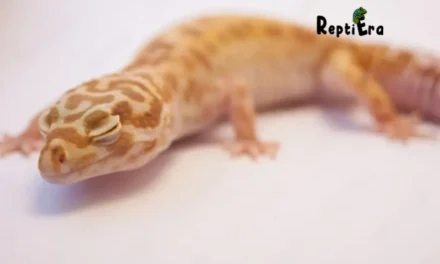
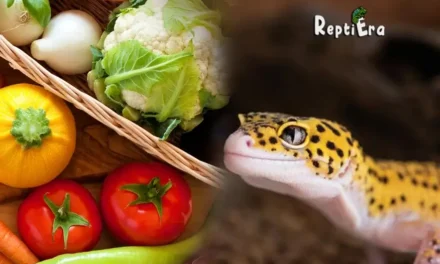
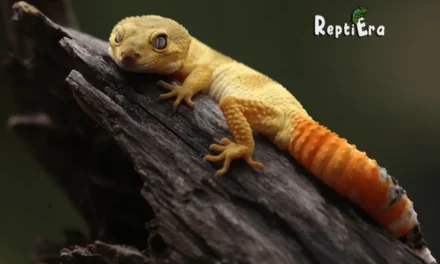
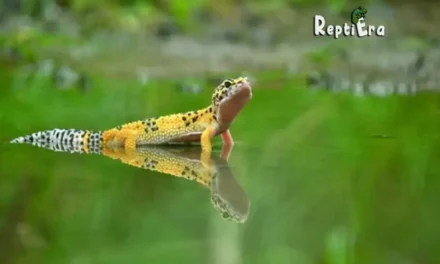
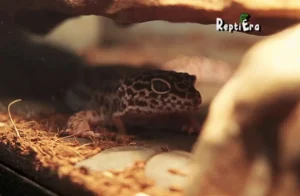
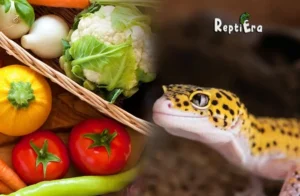
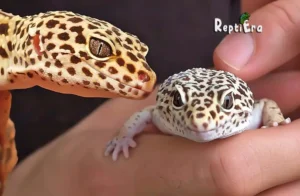
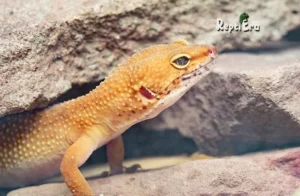
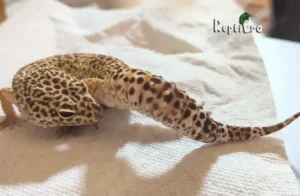
I would like to show some thanks to this writer for bailing me out of this particular crisis. Right after looking out through the the web and seeing ways that were not helpful, I figured my life was gone. Being alive without the approaches to the difficulties you have solved all through the blog post is a serious case, as well as ones that might have badly affected my career if I had not come across your web page. Your personal mastery and kindness in taking care of all the things was very helpful. I am not sure what I would’ve done if I hadn’t encountered such a thing like this. I can now look forward to my future. Thanks for your time so much for the expert and results-oriented guide. I will not be reluctant to recommend your blog post to anyone who needs to have care on this matter.
Thank you so much for your kind words! I’m truly humbled to know that the post was able to help you through such a tough time. Your message means a lot to me and reminds me why I started sharing in the first place. I’m so glad you’re feeling more hopeful about the future now. Wishing you all the best moving forward—and please don’t hesitate to reach out if you ever need more support or guidance. You’re not alone on this journey!